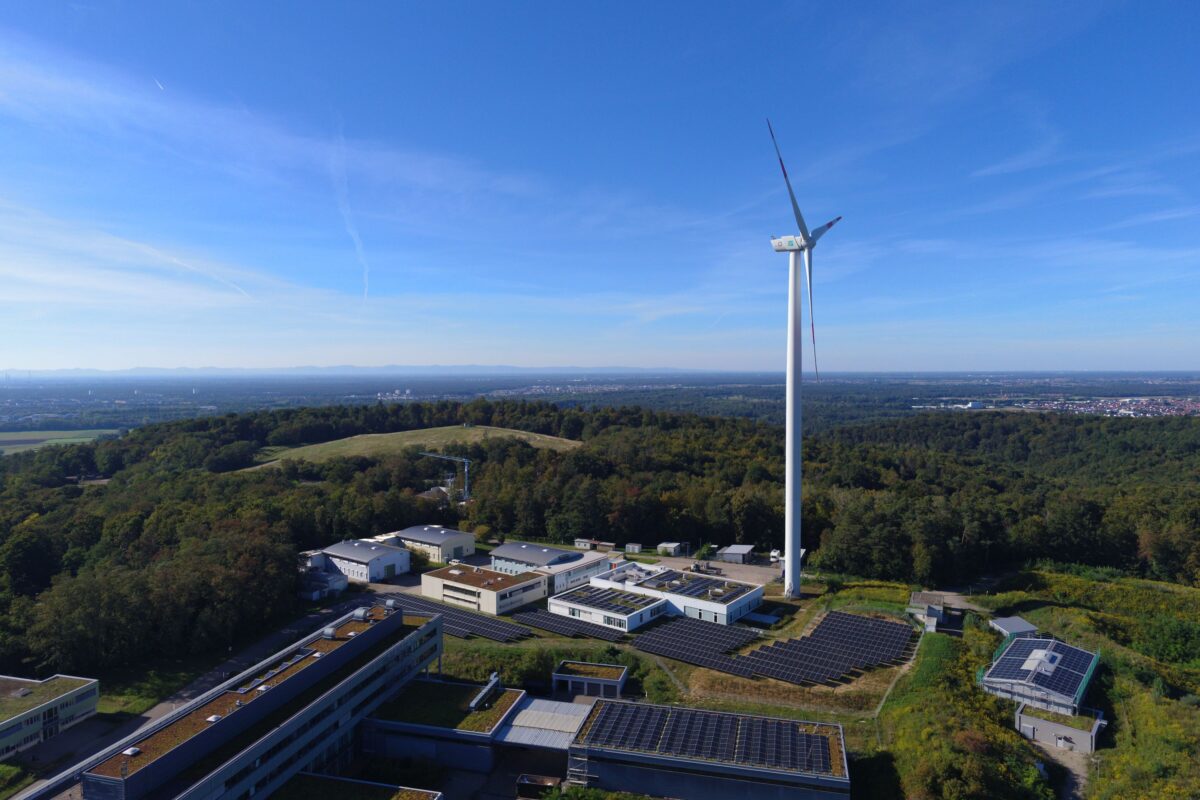German renewable energy developer BayWa re and Ampt, a US-based DC optimizer producer, have announced the deployment of a hybrid wind-solar-flow battery facility in the microgrid of the Fraunhofer ICT campus in Pfinztal, Germany.
The project, billed as the first of its kind in Europe, features three rooftop arrays and one new ground-mounted PV system, with a total capacity of 690 kWp. They are connected to the power grid via an existing 2 MW wind turbine instead of their own inverters. The project also features a 10 MWh flow battery energy storage system.
Each of the different technologies were integrated through a shared DC bus – commonly referred to as DC-coupled architecture – using Ampt String Optimizers, a type of DC/DC converter that performs maximum power point tracking (MPPT).
Ampt’s optimizers use individual string MPPT to mitigate energy losses caused by shade from surrounding buildings on the Fraunhofer ICT campus. The optimizers are programmable and provide string-level data, which enhances visibility of the system functions, as well as operation and maintenance capabilities.
Andrea Grotzke, global director of energy solutions at BayWa re, said Ampt’s technology “simplified a technically very complex project.”
“The way we have added solar to the existing wind energy and battery storage system is unique, and in successfully completing this project we were able to further improve our own expertise and capabilities,” said Grotzke.
Popular content
According to Levant Gun, the CEO of Ampt, combining rooftop and ground-mounted solar in seven different orientations and two module sizes in one common microgrid with wind power and batteries was a significant challenge.
“This project is a testament to the capabilities of our industry-leading power conversion technology to simplify control of the diverse systems spread across a site,” Gun said.
Fraunhofer ICT said it will use the system to support its campus of more than 100 laboratories, as well as several pilot plans and three test centers.
“It was important for us to add solar to the microgrid that powers our campus, to bring additional flexibility and ensure higher utilization of our system,” said Frank Henning, institute director of Fraunhofer ICT. “Sustainability plays a crucial role for Fraunhofer ICT, and by combining the advantages of wind, solar and storage, we are ensured to meet our sustainability goals and operate in a responsible manner.”
This content is protected by copyright and may not be reused. If you want to cooperate with us and would like to reuse some of our content, please contact: editors@pv-magazine.com.


By submitting this form you agree to pv magazine using your data for the purposes of publishing your comment.
Your personal data will only be disclosed or otherwise transmitted to third parties for the purposes of spam filtering or if this is necessary for technical maintenance of the website. Any other transfer to third parties will not take place unless this is justified on the basis of applicable data protection regulations or if pv magazine is legally obliged to do so.
You may revoke this consent at any time with effect for the future, in which case your personal data will be deleted immediately. Otherwise, your data will be deleted if pv magazine has processed your request or the purpose of data storage is fulfilled.
Further information on data privacy can be found in our Data Protection Policy.